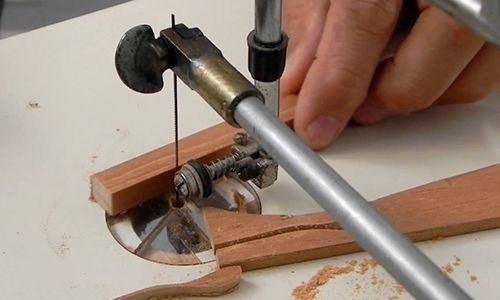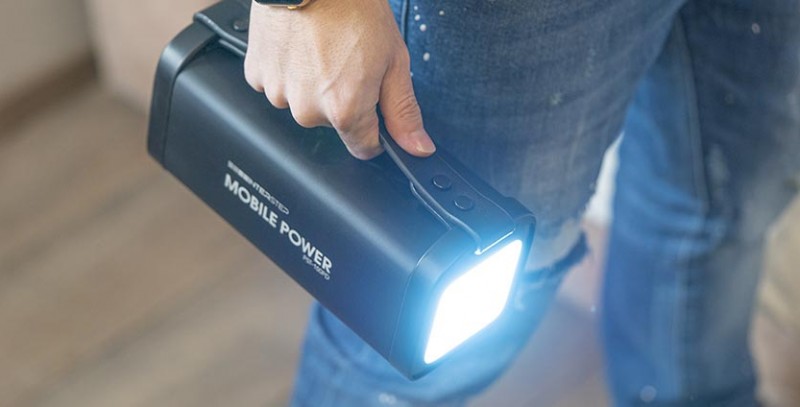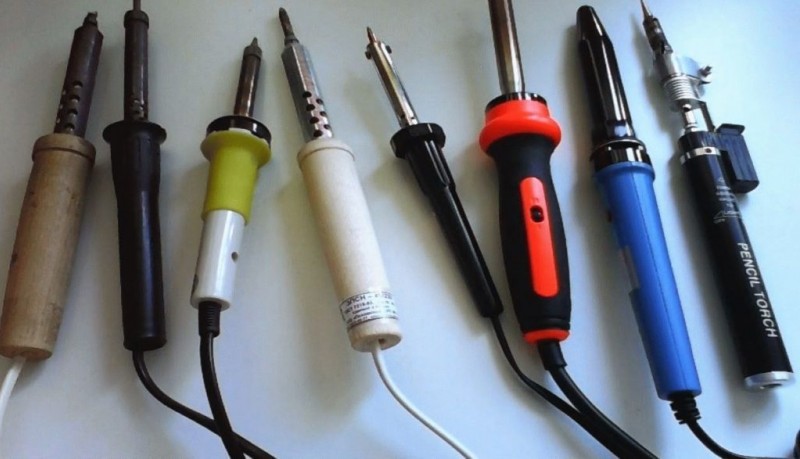Содержание
Final words
Every book is great. Every basic electronics book is awesome, get any basic book and you will learn all the basics concepts. If I say that the book is great, it is just my opinion. Maybe for other people, it is not.
You got so many choices. Above are the books that have proven themselves among different people, and people found them effective. I read them myself and found them amazing.
Above listed books teaches you the basics of electronics in an easy and effective way. These books are not theory-focused, they lead you through practices and gives you hands-on experience playing with electronics.
I hope this article kinda helped you.
Other useful posts:
- Buying best soldering stations – see what matters
- Spectrum analyzers for beginners
- Best oscilloscopes for beginners (An easy buying guide)
Thank you and have a good life.
Инверторы питания ламп подсветки ЖК телевизоров, мониторов и ноутбуков
Название: Инверторы питания ламп подсветки ЖК телевизоров, мониторов и ноутбуковАвторы: Тюнин Н.А., Родин А.В.(ред.)Год: 2012 Серия: Ремонт №122 Издательство: Солон-Пресс Язык: русский Формат: pdf Страниц: 112 Размер: 12,79 МбВ очередной книге популярной серии «Ремонт» рассматриваются DC/AC-преобразователи (по терминологии производителей — инверторы), которые используются для питания электролюминесцентных ламп подсветки жидкокристаллических панелей. По статистике ремонтных организаций это наименее надежный узел современных телевизоров, мониторов, ноутбуков и других устройств, в которых используются ЖК панели.
Conclusion
All the books we featured on this list can be used as guides and reference points for those learning about electronics.
Some are more fit for engineers and students who already have some knowledge in the field, while others are designed for absolute beginners.
So depending on your knowledge level, some of these references will be better than others.
That being said, books are one of the most efficient and accurate ways for people to learn about new things, so if you’ve been itching to get into the wild world of electronics, this is a great place for you to start!
Last Updated on June 18, 2021 by Tom
Contents
MATLAB R2007/2008/2009 для радиоинженеров
MATLAB R2007/2008/2009 для радиоинженеров. Книга посвящена применению матричной системы MATLAB в радиотехнических расчетах и в моделировании радиоэлектронных устройств и систем. Впервые описаны новейшие версии MATLAB R2007a,b/2008a,b/2009a с пакетами расширения Simulink 6/7, Signal Processing Toolbox, Filter Design Toolbox, RF Toolbox и Blockset, Wavelet Toolbox, Control Systems, SimPowerSystems и др. Описаны новейшие пакеты Simscape и SimElectronics моделирования электронных схем. Наряду с функциями командного режима работы описан интерактивный и визуально ориентированный инструментарий пакетов c графическим интерфейсом пользователя GUI и математическое моделирование систем и устройств в среде Simulink 6/7. Описана интеграция MATLAB с современными цифровыми радио измерительными приборами и виртуальными лабораториями для управления приборами и обработки реальных осциллограмм.
Electronics All-in-One For Dummies
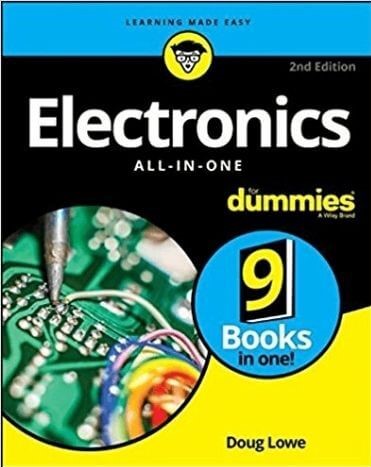
Electronics for dummies book is an ultimate guide that helps you to learn next stage. It is a collection of 8 other books that can’t be found anywhere. With the help of this book you to create and design many projects using Arduino and Raspberry Pi kits.
This Electronics for dummies book helps beginners to grasp certain topics like circuits, schematics, and other sources with detailed information about how to design your own circuit, working of hardware components, neat sketches, breadboard, and schematics.
Here, are some contents that you will learn when you read this wonderful book:
- How to safely solder the electronic components
- How to repair the existing electronic devices
- Make your own electronic projects
- Able to tackle digital, analog, and car electronic modules
- Basics of electronics with an array of numerous concepts
- How to make your own schematics and breadboards
- Become an expert in circuit designing
Who invented electronic books?
- ~3000BCE: Ancient Egyptians make the first paper from the stem of the papyrus plant.
- 105CE: Chinaman Ts’ai Lun develops modern paper from hemp fiber.
- ~1450: German Johannes Gutenberg invents the modern process of printing with movable metal type, which leads to a vast increase in the popularity of books.
- 1945: In a famous article in Atlantic Monthly called As We May Think, US government scientist Vannevar Bush proposes a kind of desk-sized memory store called Memex, which has some of the features later incorporated into electronic books and the World Wide Web (WWW).
- 1968: Computer scientist Alan Kay imagines a portable computerized book, which he nicknames the Dynabook.
- 1971: Michael Hart launches Project Gutenberg at the University of Illinois: an electronic repository for classic, out-of-copyright books.
- 1990: Sony launches its Data Discman, a portable electronic reader costing $550 that stores and reads books from compact discs (CD-ROMs). It is a commercial flop.
- 1990s: Encyclopedia publishers such as Britannica and Dorling Kindersley (DK) experiment with making their books available on interactive CD-ROMs. DK wins many awards for its CD-ROMs, but closes its multimedia business in the late 1990s as competition mounts from the Internet.
- Late 1990s: Several new handheld, electronic book readers are launched, including the SoftBook, RocketBook, and Everybook—but fail to make much impact on the marketplace.
- 2000: Best-selling horror author Stephen King launches a short novel called Riding the Bullet in electronic format and sells over half a million copies.
- 2001: Larry Sanger and Jimmy Wales give the world Wikipedia—an electronic encyclopedia anyone can contribute to.
- 2007: Amazon.com launches its wireless Kindle reader with thousands of electronic books available in electronic format, along with newspapers, RSS feeds, and other forms of «digital content.»
- 2010: Amazon Kindle becomes Amazon’s number one bestselling product, confirming that electronic books (and readers) really have arrived!
- 2010: E Ink announces Triton, a colored version of its ebook screen technology.
- 2011: Project Gutenberg celebrates 40 years of producing and distributing electronic books.
- 2014: A report by Pricewaterhouse Coopers predicts ebooks will outsell printed books by 2018, but UK bookstore founder Tim Waterstone argues the market will go into decline.
- 2014: Sony stops selling its Readers after growing sales of smartphones and tablets cause a major fall in sales.
- 2015: The Association of American Publishers reports a dramatic reversal of fortune, with a 10 percent fall in sales of ebooks (which still account for only a fifth of the market).
- 2016: E Ink announces Advanced Color ePaper (ACeP), an improved color screen.
- 2018: Walmart announces it will challenge Amazon’s dominance of the ebook market in a bold partnership with Japanese firm Rakuten.
- 2018: Hachette boss Arnaud Nourry attacks ebooks for their stupidity and lack of creativity.
The Basic Soldering Guide Handbook
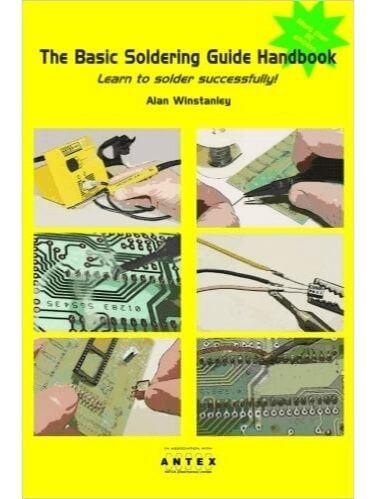
The Basic Soldering Guide Handbook is the perfect book for beginners, trainers, and hobbyists to master their skills in soldering electronics. Soldering book is useful for individuals who love to make homemade DIY projects like quad copter, Remote controlled cars, guitar, and robotic arm.
Basic soldering books includes the following topics:
- How to solder electronics components
- Steps to desolder the circuit board or electronic components.
- Methods of testing the electronic device.
- What are the precautions to be taken before start soldering.
- How to select appropriate soldering equipment like iron and solder.
List for complete beginners
Let’s talk about those people who are just getting with electronics and know nothing about it. The following books are written for such people. Things and concepts in these books are presented in a simple yet understanding way.
- Getting Started in Electronics by Forrest M. Mims III
- Electronics for Dummies by Cathleen Shamieh
- Understanding Basic Electronics by ARRL
A general overview of “Getting Started in Electronics”
This book is written by Forrest M. Mims, III, who has written dozens of books, hundreds of articles, invented scientific devices, and traveled to the Amazon for NASA. This book talks about the basics of electronics in a way you will find hard to find anywhere else. The author, Forrest Mims, has a unique way of teaching and delivering the concept which a reader can feel while reading this book.
The book starts with the basics of electronics, later talks about analog and digital electronics and components, explains how each component works, how components get together and make circuits for various applications.
Besides the theory, there is a lot of practical stuff to do. I love doing electronics, as for me theory without practical electronics is not complete. And this book includes circuit assembly tips and 100 electronic circuits and projects you can build and test.
You get to make 100 unique circuits all by yourself. The circuits are purely based on the knowledge you learn in the book so don’t worry about any complications and confusion.
If you are interested in this book and want to know more about it, check out this link, Getting started in electronics (Amazon link).In my opinion, you will enjoy reading this handwritten book a lot.
FAQ’s
How Can I Best Learn About Basic Electronics?
The best way to learn is by having a good teacher, so if you have a reliable trade school in your area, it’s recommended to check out what classes they have on electronics.
However, if you can’t enroll in a class, the best way to learn basic electronics is by reading some of the books and other resources on the topic.
Can I Learn Electronic On Your Own?
Yes, it is very possible to learn it on your own.
That being said, there is a fair learning curve when figuring out just about any hobby or craft out there, so always remember to be patient and try your best to understand the concepts to the best of your ability.
Is It Difficult To Learn With Books?
While it may seem tricky at first, electronics can be fairly easy to learn, once you have the basics down.
Just remember that every craft takes time and you will need to be patient to fully understand some of the concepts and skills associated with the craft.
How Long Does It Take To Be Good?
To become an expert on the subject, some people and scholars say it can take up to 15 to 30 years of experience in the field.
That being said, everyone learns at their own pace, so while some people might be able to master certain skills in a couple of months, others may take a much longer time.
Yes, for sure.
You can try it yourself after finishing one book.
Where Can I Get the Components Need to Practice? Would Those Components Be Reliable Enough?
Feel free to buy from local stores near you, or you can buy online.
There are tons of websites that sell these things.
Or you can simply just go to Amazon and do a simple search.
Beginner’s Guide to Reading Schematics, 3rd Edition
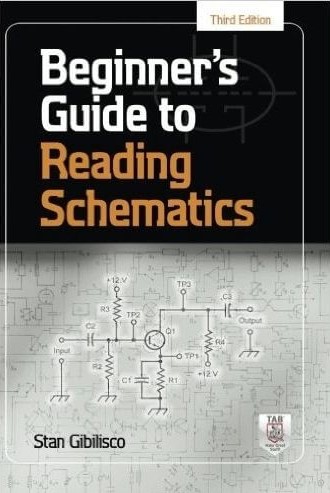
Beginner’s Guide to Reading Schematics, Third Edition book contains demo circuits which you can build, hands-on, illustrated guide explains how to understand and create high-precision electronics diagrams. Also, decipher element ratings, how to identify parts and connections etc.
In this book detailed coverage of:
- pictorial diagrams, Schematic, and block
- capacitors and Resistors
- Inductors and transformers
- Conductors, Switches, and cables
- Logic gates, Diodes, and transistors
- Cells and batteries
- Breadboards and wire wrapping
- Electronics troubleshooting
- Electron tubes
- Voltage dividers and reducers
- Resistor color codes
Two in one: books… and the information they contain
Think of a book and you think of a single object, but the books we
read are actually two things in one: there’s the information (the words
and pictures and their meaning) and there’s the physical object (the
paper, cardboard, and ink) that contains them. Sometimes the physical
part of a book is as important as the information it carries: it’s
really true that we judge books by their covers—at least when we’re
standing in shops deciding which ones to buy—and that’s why publishers
devote so much attention to making their books look attractive. But, a
lot of the time, the information is much more important to us and we
don’t really care how it’s delivered. That’s why many of us now turn to
the Web when we want to find things
out instead of visiting the local library.
In short, we’ve learned to split off the information we need from
the way it’s delivered. Ebooks take this idea a step further. When we
talk about an ebook, we really mean a digital version of a printed
text that we can read on a handheld electronic device like a miniature
laptop computer— two quite
separate things, once again.
Electronics Books on Getting Started
Electronics For Kids
Electronics For Kids is the ultimate book for kids that want to learn how to build cool things with electronics. I wrote it as the book I would have loved to have when growing up. It’s suitable for all “kids” that are interested in electronics, even if you’re 8 or 100 years old.
The book is very hands-on, and you’ll get to build projects like a motor, a lemon-powered LED light, an electronic coin-tosser, a really cool LED reaction game, and much more.
Click here to buy it on Amazon
Getting Started With Electronics (2nd Edition)
The purpose of this eBook is to answer that question in a simple and practical way. It includes step-by-step instructions on how to get started. No fluff. This is for the complete beginner who has no experience building circuits.
Click here to get the eBook.
Exploring Arduino
Exploring Arduino is a book that helps you get started with Arduino. But it doesn’t stop there. It takes you through several topics so that you will be able to build very advanced projects on your own. Some of the projects you will build includes an LCD display project, using SD-cards and connecting your Arduino to the internet.
Click here to get it on Amazon.
What To Look For When Buying
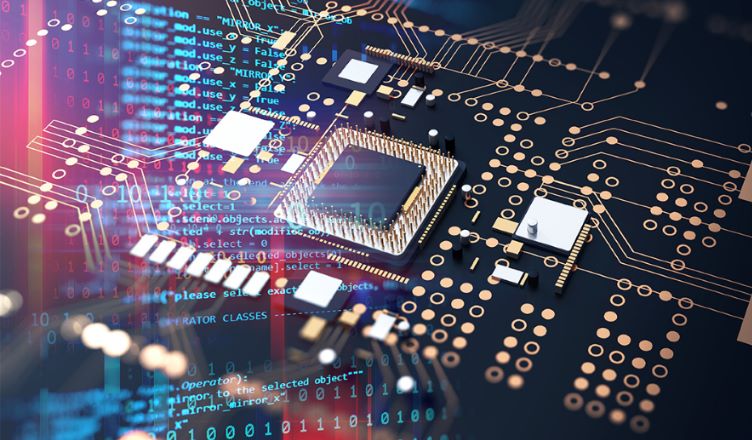
Before we go through our list of the best basic electronics books on the market, we first have to figure out things you need to look out for when shopping.
Contains All The Needed Information
This is arguably the most important factor in any book, regardless of the topic.
When you’re getting into the field of electronics, there are a lot of things that need to be covered to build a sturdy foundation, and a quality book on the basics needs to have all this information.
That means that it has to have information about the basic laws and rules that electricity follows, the way circuits work, practical applications of the laws and theories, as well as basic circuits and even photos and diagrams.
In the field of electronics, even experts will sometimes need to go back to a reference book to refresh their memory, so having a comprehensive and informative book on the basics of electronics will be very valuable in the long run.
Well Written
Since you’re getting a book to build foundational knowledge, it’s also important that it’s well-written and easy to understand.
A book that throws in a ton of jargon and complicated terms may be easy to understand if you already have experience, but to a beginner, it might just look like a bunch of gibberish.
So if you have the chance, before buying the book, try browsing through it and see how it is written.
From there, you can see how easy it is to understand the content that’s being explained, and if you’re having a hard time understanding it, you might want to look at other sources that are easier to understand.
Verified Sources
Lastly, another thing you would want to pay attention to when browsing for books is the sources and references used by the books themselves.
Make sure that the book uses relevant, reliable, and accurate sources so that you know the information being taken in is something you can use and apply practically.
This can be tricky and might take some time, but it will be very much worth it considering it ensures that the book you’re reading contains up-to-date and factual information.
Применение микроконтроллеров в звуковой технике (+CD)
Название: Применение микроконтроллеров в звуковой технике (+CD)Авторы: С.Р. Баширов, А.С. Баширов, Р.И. АвиловГод: 2008Издательство: ЭксмоСерия: РадиоэлектроникаФормат: PDFСтраниц: 253Размер: 30,11 МбВ книге описаны практически все виды устройств, применяемых в звукотехнике, — от простейших темброблоков до музыкального центра и многофункционального усилителя высокого класса. При разработке устройств был применен блочный принцип проектирования, позволяющий разрабатывать и отлаживать отдельные узлы независимо друг от друга. Единая система соединений (разъемов) позволяет комбинировать различные узлы в комбинацию с желаемыми параметрами и существенно облегчает отладку конечного устройства. Все конструкции, описанные в книге, — реальные. Программы, приведенные в данной книге, были проверены и отлажены на реальных устройствах.
Электропитание радиоэлектронных средств
Название: Электропитание радиоэлектронных средств. Сборник примеров и задачАвтор(ы): Сажнев А.М., Рогулина Л.Г.Год: 2018Издательство: НГТУЯзык: русскийФормат: pdfСтраниц: 307Размер: 10,2 МбПриводится краткое изложение принципов действия, порядок и примеры расчета устройств электропитания: трансформаторов, неуправляемых выпрямителей, сглаживающих фильтров, стабилизаторов и инверторов напряжения, а также токораспределительной сети постоянного тока и требования к выбору типового промышленного оборудования систем электропитания. Рассмотрены примеры решения задач по всем разделам учебного курса и комплекс тестовых заданий с ответами.
Best basic electronics books for everyone
The term basic electronics is itself a huge topic, you can’t specifically define it nor you just can learn it in a short time. It needs time, practice, and interest.
For me, learning basic electronics should make you able to understand the basic of electricity, should make you able to understand the working of electronics components and instruments, should make you able to understand the working of some basic circuits, and should also make you able to somehow design you own small circuits and projects.
I just keep the above in my mind and make the following list of books, that I think will make to understand the basics of electronics. You will be able to use electronic instruments like a multimeter and make your measurements of voltages and currents, and much more.
У.Титце, К. Шенк. Полупроводниковая схемотехника (Том 1, 2)
Название: Полупроводниковая схемотехника (Том 1, 2)Авторы: У. Титце, К. ШенкГод издания: 2008Издательство: ДМК прессЯзык: русскийФормат: pdfСтраниц: том 1 — 832, том 2 — 942Размер: 109,02 МбКнига представляет собой фундаментальный труд, объединяющий принципы устройства полупроводниковых элементов (диоды, биполярные и полевые транзисторы, интегральные микросхемы) и основы создания из этих элементов различных функциональных узлов аналоговой техники (усилители, модуляторы, фильтры, радиоприемники) и цифровой (спусковые схемы, счетчики, регистры, шифраторы и дешифраторы, устройства памяти и т.д.).
Electronics Theory Books
The heavy electronics theory books tend to be a bit more pricey than standard books. The two books I have listed here should be worth the investment though, if you see yourself working with electronics for many years to come.
The Art of Electronics
The Art Of Electronics is a book that offers a vast amount of circuits and theory. It is not a “Getting Started” type-of-book, but rather a collection of theory and circuits. And it is really helpful to have as a reference book when working with electronics. This is one of the electronics books that I have in my bookshelf, and it has been really helpful both in my studies and in projects later in life.
Click here to buy it on Amazon.
Foundations of Analog and Digital Electronic Circuits
This book on electronics is recommended by many as a really detailed book on all the fundamentals of electronics. It has a lot of theory and would be suitable for you if you are studying electronics or if you are really dedicated to learning all the ins and outs of electronics.
If you have this book and The Art Of Electronics you will have two electronics books containing almost everything there is to know about electronics.
Click here to buy it on Amazon
Защита информации техническими средствами
Название: Защита информации техническими средствамиАвторы: Каторин Ю.Ф., Разумовский А.В., Спивак А.И.Год: 2012Издательство: НИУ ИТМОЯзык: русскийФормат: pdfСтраниц: 418Размер: 10.33 mbВ учебном пособии в простой и доступной форме излагаются основные способы съема конфиденциальной информации с помощью технических средств и принципы построения средств и систем защиты.Пособие предназначено для формирования у студентов знаний по основам инженерно-технической защиты информации, а также развития в процессе обучения системного мышления, необходимого для решения задач инженерно-технической защиты информации.
Цифровая обработка сигналов. Практический подход (2-е изд.)
Название: Цифровая обработка сигналов. Практический подход (2-е издание)Авторы: Айфичер Э. Джервис Б.Издательство: ВильямсГод: 2004Страниц: 987Формат: DjVuРазмер: 10,26 МбДанная книга предназначена в первую очередь для практиков — инженеров-электронщиков, программистов, людей, занимающихся техникой связи, вычислительными и электронными устройствами. Хотя теоретические основы и изложены в необходимом объеме (не зная основных принципов, работать с цифровыми системами невозможно), основной акцент все же делается на практической разработке современных цифровых устройств, которые можно будет использовать в военной сфере и биомедицине, телекоммуникациях и проигрывателях компакт-дисков, обработке изображений и цифровом телевидении.
Practical Electronics for Inventors, 4th Edition
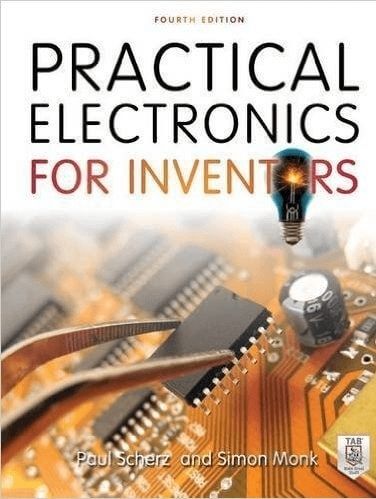
Practical Electronics for Inventors, 4th Edition book is perfect for electrical engineering students who have a strong wish to boost their knowledge in electronics and gain the skills necessary to develop their own fun gadgets.
This book is written by experienced engineers and professionals to provide the necessary information with schematics and illustrations. It gives you an idea about the design and builds electronic devices and how to select the components.
It also features instructions on voltage regulators, programming logic, operational amplifiers, and many more.
Practical Electronics for Inventors, 4th Edition book provides detailed information that includes:
- Active components
- Passive components
- Microcontrollers
- Logic gates
- LCD display
- digital electronics
- DC motors and stepper motors
- Speakers, Microphones, and audio amplifiers.
Общая теория радиолокации и радионавигации. Распространение радиоволн
Название: Общая теория радиолокации и радионавигации. Распространение радиоволнАвторы: А.Н. Фомин, В.А. Копылов, А.А. Филонов, А.В. АндроновГод: 2017Издательство: СФУЯзык: русскийФормат: pdfСтраниц: 318Размер: 11 mbВ данном учебнике рассмотрены физические процессы, происходящие при распространении радиоволн вблизи поверхности и в атмосфере Земли
Особое внимание уделено описанию физических процессов, происходящих в линиях передачи энергии СВЧ-диапазона. Подробно изложены в теоретическом и практическом плане конкретные типы согласующих устройств, которые применяются в прямоугольных волноводах, коаксиальных линиях для обеспечения передачи максимальной мощности в нагрузку
How does E Ink® work?
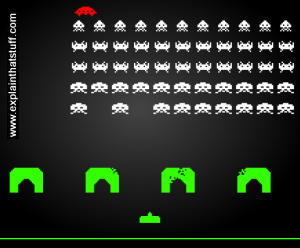
Photo: Computer screens as we knew them in the late 1970s and early 1980s. At that time, the best screens could display no more than about 64,000 pixels and often just uppercase text or very crude «pixelated» (square block) graphics. Computer games like Space Invaders, shown here, were very primitive—but still highly addictive!
Since electronic ink has been crucial to the success of ebooks, let’s
now take a detailed look at how it works.
You’re probably reading these words in the same way that I am—by staring at
a flat, LCD computer or smartphone screen. For people over the age of about 35, who
grew up with computers that used blocky green and black screens with
just 40 characters across and 25 down, modern screens are wonderful
and amazing. But they still have their drawbacks. Look closely, and
you can see jagged edges to the letters. Try to read an LCD screen in
direct sunlight and (unless the screen has a very bright backlight), you’ll really
struggle. But the worse thing is that LCD screens lack the
lightness, portability, and sheer user-friendliness of ink-printed paper:
you can happily read a book for hours, but try the same trick with a
computer screen and your eyes will quickly tire.

Photo: LCD versus E Ink: The E Ink display on a Sony Reader (bottom) is much sharper and easier to read than a typical LCD screen (top). Magnifying by about 8–10 times and zooming in on a single word, you can see why. The E Ink display makes sharper letters with a uniformly white background. The LCD display blurs its letters with anti-aliasing to make them less jagged, though that makes them harder to read close up. The red, blue, and green colored pixels used to make up the LCD’s «white» background are also much more noticeable. Unlike the E Ink display, an
LCD does not use a true white background: it relies on your eye and brain to fuse colored pixels instead. The resolution of E Ink is also far greater: typical LCD displays use around 90 pixels per inch, whereas E Ink displays use at least twice as many pixels.
Back in the early 1970s, the Xerox Corporation that had pioneered
photocopiers a decade earlier became concerned about the threat that
computers might pose to its core ink-and-paper business: if everyone
started using computers, and offices became paperless, what would
happen to a company so utterly dependent on paper technology? It was
for that reason that Xerox pumped huge amounts of money into PARC,
(Palto Alto Research Center), the now-legendary campus where modern,
user-friendly personal computing was pioneered. Among the many innovations
developed there were personal computers that used a
graphical user interface
(the «desktop» screen featuring icons, later copied by the Apple Macintosh and Microsoft Windows),
Ethernet networking,
laser printers… and electronic paper, which was invented
by PARC researcher Nick Sheridon.
How to Diagnose and Fix Everything Electronic, 2nd Edition
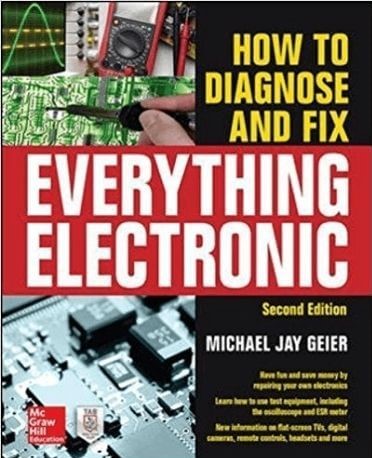
How to Diagnose and Fix Everything Electronic, Second Edition this book will help you to repair your gadget/device. If your gadget is damaged due to internal circuitry, Instead of buying a new gadget that is too expensive you can repair and extend the life of digital electronic devices, just by reading this amazing book.
This book includes electronic projects that are explained in step-by-step procedures. It contains neat sketches and circuit diagrams as well.
This book explains the following:
- How to choose the proper tools and set up your workbench
- Working of electrical components and why they fail, analyse and work
- Helps to perform preliminary diagnoses based on symptoms
- Use different test equipment, including digital multimeters, ESR meters, frequency
- counters, and oscilloscopes
- Interpret block, schematic, and pictorial diagrams
- Disassemble products and identify sections
- Analyze circuits, locate faults, and replace dead parts
- Re-establish connections and reassemble devices
#2 Make Electronics – Learning by Discovery by Charles Platt (2nd Edition)
“Learn while you make” – that’s the best one liner for this book.
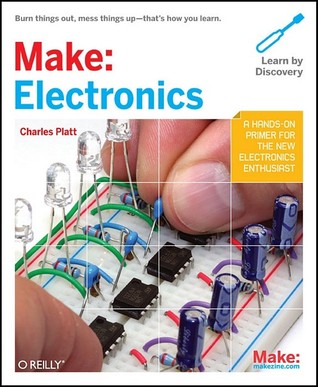
This is a great book where you can practice first and learn while you make the circuit. A totally different approach given to electronics self-teaching. The book encourages you to think – “Why it is so” ?. In one of the first experiments author asks reader to touch battery leads with tongue – what a fun way to begin learning electronics. The problem with most books on “basic electronics” is they all teach mathematical circuit analysis first! – which is not appealing to the beginner As a starter in electronics one should wet his/her hands first at experimenting. This kind of trial and error experimenting develops curiosity. To solve curiosity one starts asking – “Why it happens so”. This is the point where you should start learning theory. When you start learning theory after experimenting with stuff – you will understand theory efficiently and faster.
So this book is really great to get your hands wet! Highly recommended.
Note:- ProTechTrader – a company which specializes in electronics component trading in USA has released a pretty useful ‘Component Kit‘ based on this book – Make Electronics – Learning by Discovery (2nd Edition). We have reviewed this Component Kit from ProTechTrader in detail. This kit is pretty useful for any beginner in electronics and can accelerate your learning curve by many folds.
About the Author:-
Charles Platt – is a first generation electronics author of the 70’s and 80’s. He is now a contributing editor of the world famous Make Magazine. He as written popular science fiction novels like -The silicon man. In addition he is also a first generation computer programmer.
List for everyone
The above books are great, but if you are familiar with electronics a little bit. Though I would say you should read those above books as well for making your concepts more strong or to revisit your concepts, if you don’t you will do greats without them.
The below list is for everyone, you can read them anytime.
-
- Make: Electronics: Learning Through Discovery by Charles Platt
- The Art of Electronics by Paul Horowitz
- Exploring Arduino: Tools and Techniques for Engineering Wizardry by Jeremy Blum
A general overview of “Make: Electronics: Learning Through Discovery”
This is another best book from Make magazine for learning basic electronics. As the name suggests there is a lot of practical work involved. In this book, you not only learn the theory but also get your hands dirty with some basic electronics. The author says, Make: Electronics is the book that I wish I had owned when I was a young teenager, struggling to learn the basics of electricity and electronics. My goal is to give readers today an easier learning experience than the one I had to go through. And I want it to be fun.
Everything is represented with beautiful illustrations and diagrams which the reader will enjoy while reading it.
The book starts with basic electronics concepts, then goes to some advanced topics such as working with integrated circuits. But don’t worry, everything is explained in a very easy way.
Talks about different techniques while you playing with electronics. Such as soldering, the book teaches how to solder well, how to differentiate between a good and bad soldering wire, and a lot of more fun stuff.
This book is the best starting point for everyone into electronics, no matter if you are a student or hobbyist, you will find great value in this book. If you are interested in this book and want to know more about it, check out this link, Make electronics by Charles Platt (Amazon link).
A general overview of “The Art of Electronics”
A truly remarkable book written by Paul Horowitz, a Research Professor of Physics and of Electrical Engineering at Harvard University, wherein 1974 he originated the Laboratory Electronics course from which emerged The Art of Electronics, and Winfield Hill is by inclination an electronics circuit-design guru.
This book needs no introduction. A remarkable gift for engineers as well as hobbyists. The book will teach you almost everything you need to know as a beginner. And will lead you from basic concepts to more complex and advance topics.
The book deals with real-life situations, no ideal assumptions. For example, no ideal assumptions are taken while analyzing the circuits. Usually, books take an ideal assumption like there is no loss in the circuit to make the mathematics easy, and when you actually design the circuits, results are a little different.
At the start, the book deals with analog circuits designs and later moves to the basics of digital electronics. So, the reader gets the taste of both analog and digital electronics.
I personally love this book. The reason I am listing it at three because I think it is a little advance for complete beginners.
To know more about this amazing book, here is the Amazon link, The Art of Electronics. If you are interested give it a try. It is a little expensive but the money worth it.
Electronics for Kids
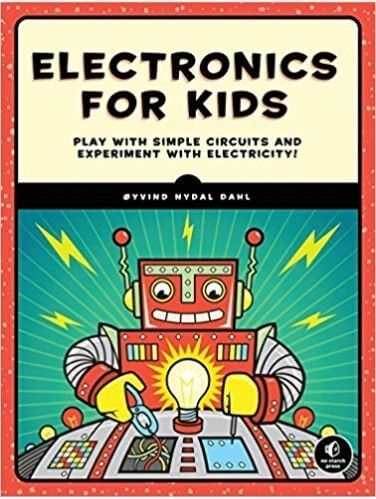
Electronics for kids book contains hand projects for kids. This book helps the kids to learn about how current, voltage circuits work.
Here are some topics that the electronics for kids book includes:
- how to create a musical instrument that makes sci-fi sounds
- Helps to build an alarm clock triggered by the sunrise
- How to turn a circuit into a touch sensor using your finger as a resistor
- Solder a blinking LED circuit with capacitors, relays, and resistors.
Kids may think and ask questions like why do the lights in a house turn on when you flip a switch, How does a remote-controlled car move etc.
This book also helps you to learn about digital electronics things like logic gates and memory circuits, as you make a secret code checker and an electronic coin flipper. It has clear explanations and an assortment of hands-on projects.
Click here to know about Which field is better: IoT or Embedded in today’s industry?
Books for beginners
These books are great for starting to learn about electronics.
Electronics for Kids
A great introduction, this book starts by assuming no previous knowledge then carefully builds up straightforward explanations
of how components work, plus practical techniques including wire-stripping, soldering and using a multimeter.
The final project uses three ICs to make a great game.
The author, Øyvind Nydal Dahl, has done a great job in providing clear step-by-step instructions with breadboard (or stripboard)
layouts as well as circuit diagrams for projects. As Technical Reviewer for the book I’ve built all the projects myself and I’m very
happy to recommend it to anyone looking for a fun and educational introduction to electronics.
A Beginner’s Guide to Circuits
Another great book by Øyvind Nydal Dahl, author of Electronics for Kids (above). There are circuit diagrams and parts lists for 9 simple projects,
all of which can be built on breadboard without soldering. The first project has full step-by-step instructions to help a beginner build the others
from their circuit diagrams. Common mistakes are highlighted and there’s a helpful explanation of how each circuit works.
This book makes a good companion to Electronics for Kids which I recommend you read first if you are new to electronics.
A thorough introduction to electronics, assuming no previous knowledge.
A thorough introduction to electronics, assuming no previous knowledge..
Detailed instructions for building and testing ten projects.
A great practical book for the beginner with step-by-step instructions for building circuits on breadboard.
Make: More Electronics
This continues from the above book by introducing more advanced circuits using comparators, logic ICs, decoders and shift registers.
Electronic Components, Volume 1
An encyclopedia of electronic components. Volume 1 covers resistors, capacitors, inductors, switches, relays and transistors.
Electronic Components, Volume 2
An encyclopedia of electronic components. Volume 2 covers LEDs, LCDs, thyristors, logic ICs, audio electronics and amplifiers.
An encyclopedia of electronic components. Volume 3 covers a wide range of electronic sensors.



